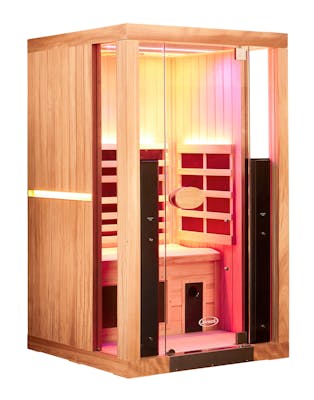Environmental Impact of Wood Burning Heaters
The environmental impact of using wood burning heaters in saunas is an important consideration for many. Wood burning heaters can potentially lead to lower greenhouse gas emissions compared to traditional fossil fuels. This is because firewood, when sourced sustainably, can be a renewable energy source that fits into a carbon-neutral cycle.
Understanding the carbon footprint, which refers to the total greenhouse gas emissions caused by human activities, including energy consumption, is crucial. Choosing wood burning saunas allows users to reduce overall carbon emissions and support sustainable practices, making a more environmentally conscious decision.
Sustainable Sourcing of Firewood
Sourcing firewood locally is a critical aspect of reducing the environmental impact of wood fire saunas. When firewood is sourced locally, it minimizes the carbon footprint associated with the transportation of fuels. Sustainable sourcing of firewood ensures responsible use that does not contribute to deforestation or other environmental issues.
This approach provides an eco-friendly option for enjoying a traditional sauna experience, for example, while being mindful of environmental impact.
Carbon Footprint Reduction
Using firewood as an energy source in saunas can significantly reduce dependence on fossil fuels, thereby lowering overall carbon emissions. The carbon dioxide released during the burning of firewood is offset by the carbon absorbed during the tree’s growth, contributing to a carbon-neutral energy cycle. This makes wood burning an environmentally responsible choice for sauna heating.
Moreover, locally sourced firewood supports local economies and reduces transportation emissions. Choosing firewood from nearby suppliers supports the local community and decreases the environmental impact of long-distance fuel transportation. This makes the use of firewood in saunas a sustainable and community-friendly option.
Comparing Wood Fire Saunas to Infrared Saunas
When comparing wood fire saunas to infrared saunas, several key differences stand out. Wood fire saunas generate high temperatures, creating steam and a traditional sauna feel, whereas infrared saunas use infrared heaters to warm the body directly, without significantly affecting the surrounding air. This difference in heating methods leads to distinct experiences and benefits.
Infrared saunas typically operate at lower temperatures than wood fire saunas, offering a more comfortable experience while still promoting effective sweat and detoxification. Users often appreciate the energy efficiency and quick heating capabilities of infrared saunas, which can make them more convenient for regular use.
Personal preference plays a significant role in choosing between these two types of quality saunas on sale for each person to make a purchase.
Heating Methods
Wood fire saunas and infrared saunas differ significantly in their heating methods. Wood fire saunas use high temperatures to create steam, providing a traditional sauna experience that many find deeply relaxing. The heat from a wood burning heater envelops the entire sauna room, creating a warm and inviting atmosphere.
In contrast, infrared saunas use infrared light to warm the body directly, resulting in a milder overall temperature in the sauna. This method allows for effective infrared heat therapy at lower temperatures, making infrared saunas more energy-efficient and quicker to heat up. Additionally, light therapy can complement the benefits of infrared saunas.
The choice between these heating methods often comes down to personal preference and desired sauna experience.
Health Benefits
Both wood fire saunas and infrared saunas offer distinct health benefits. Infrared saunas are known for their ability to promote deep detoxification, relaxation, and pain relief due to their unique heating mechanism that penetrates deeper into the body. Users often report improved relaxation, reduced muscle soreness, and relief from physical discomfort.
On the other hand, traditional wood fire saunas reach higher temperatures, enhancing detoxification through sweating. The intense heat allows you to explore a more vigorous detox experience.
Both types of saunas cater to different health needs and preferences, offering various benefits such as relaxation, stress relief, and enhanced overall wellness in the world.
User Preferences
Personal preferences play a crucial role in choosing between wood fire saunas and infrared saunas. Factors such as personal health goals, available space, and desired heating experience should be considered. For instance, those who prefer the authentic ambiance and higher temperatures of wood fire saunas may opt for this traditional option.
Conversely, individuals who seek a gentler heat experience and value the convenience of quick heating and energy efficiency may prefer infrared saunas. Review often highlight the user-friendliness and compact nature of infrared saunas, making them suitable to accommodate various living spaces, including a unit.
Ultimately, the decision comes down to which type of sauna aligns best with one’s life and wellness goals.

















